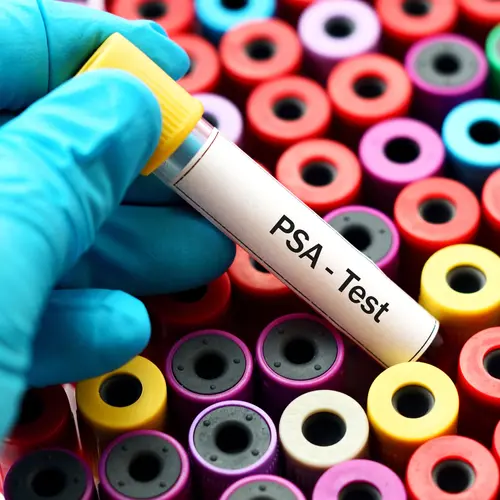May 19, 2025 – The aggressive prostate cancer found in former President Joe Biden raised questions for millions of men. Here's what you need to know – and how to check your risk.
1. Biden's Gleason score was 9, with metastasis (spreading) to the bone.
What it means: The cancer has spread to his bones. When doctors biopsy prostate cancer, they assign a Gleason score (from 2 to 10) based on how abnormal the cancer cells look under a microscope. A score of 9 or 10 means the cancer will likely grow and spread quickly, making it more dangerous. Men with a Gleason score of 9 or 10 had a 21% risk of dying from prostate cancer over 10 years, according to a new study in the American Journal of Epidemiology. That compares to just a 2% risk in men with the slowest-growing prostate cancers.
What you need to know: Ask your doctor whether they recommend prostate cancer screening based on your age and family history. About half of people with prostate cancer eventually get metastatic cancer, but finding cancer early and treating it can lower that rate. A small but growing percentage of men, like Biden, aren't diagnosed until their prostate cancer has spread. "Early detection is key, and we are concerned given the 5% year-over-year increase in diagnosis of men with more advanced disease," the American Cancer Society said in a statement.
2. The cancer appears to be hormone-sensitive.
What it means: Hormone-sensitive metastatic prostate cancer uses the hormone androgen to grow. It has no cure, but it responds to androgen deprivation therapy, which slows cancer growth by lowering levels of hormones like testosterone.
What you need to know: Androgen deprivation therapy often helps, but it eventually stops working. Another option is to see if you are eligible for a clinical trial testing a new treatment. Some people opt for watchful waiting, where your doctor monitors your health closely, and start treatment only if tests show your cancer is getting worse.
3. He was diagnosed after having symptoms.
What it means: Doctors discovered a prostate nodule after Biden sought help for urinary symptoms, not through routine screening.
What you need to know: Symptoms of prostate cancer can include urinary problems or erectile dysfunction. "Others present with bone pain, fractures, weight loss or kidney failure," Suneil Jain, PhD, a professor of clinical oncology at Queen's University Belfast, said in a statement. "Some men actually have very few symptoms, and the cancer is detected on a routine PSA test."
Urinary symptoms are common in older men, and often the culprit isn't cancer. Still, get checked out if you notice new symptoms, like rushing to the bathroom, peeing more often than usual, or especially bloody urine. Your doctor can find out if it's something serious or a more manageable chronic condition such as benign prostatic hyperplasia.
4. He's 82 – and age is the biggest risk factor for prostate cancer.
What it means: Six in 10 prostate cancer cases are diagnosed in men older than 65. And the risk of late-stage prostate cancer goes up with age.
What you need to know: Black men face the highest risk, followed by non-Hispanic White men, while Asian American, Hispanic, and Latino men have a lower risk. Other risk factors to watch for: a family history of prostate cancer, a history of smoking, inherited variants of the BRCA1 or BRCA2 gene, or Lynch syndrome.
5. Biden's diagnosis has people talking about prostate cancer screening.
What it means: Biden's case may raise awareness, leading more men to get tested.
What you need to know: Prostate cancer screening guidelines vary, so talk with your doctor about your situation. The American Cancer Society recommends discussing screening around age 50 if you're at average risk but as early as 40 if you have a strong family history. The most common screening tests are the prostate-specific antigen (PSA) blood test and digital rectal exam. And some newer genetic tests can also help fine-tune your results.


